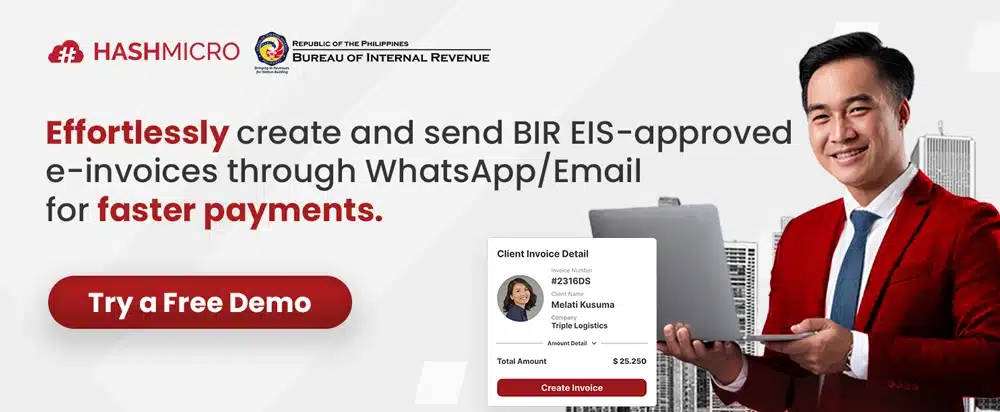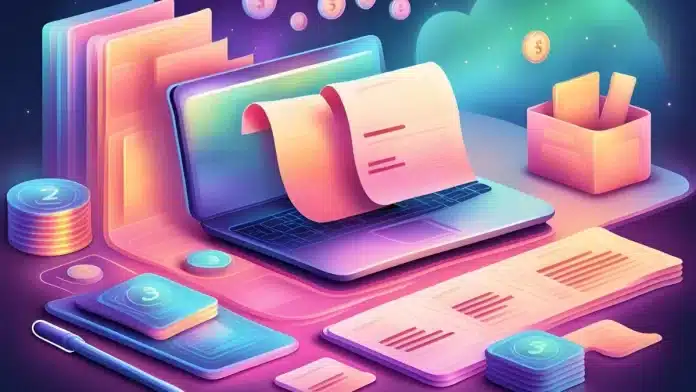Effective invoicing and billing are essential for maintaining smooth cash flow and strong client relationships. Invoicing is the process of creating and sending bills for products or services provided. However, many businesses face challenges such as errors, delays, and inefficiencies in their billing process.
These issues can cause frustration and slow down payments. By optimizing your invoicing and billing process, you can reduce mistakes, speed up payments, and improve customer satisfaction.
In this article, we’ll share seven practical tips to help streamline your billing system. Magpatuloy sa pagbasa upang malaman kung paano ang mga simpleng pagbabago ay maaaring magpabuti ng financial performance ng iyong negosyo.
Table of Contents

Key Takeaways
|
What is Invoicing?
Invoicing is the process of creating and sending a document that outlines the goods or services a seller has provided to a buyer, along with the corresponding payment amount.
Typically, an invoice includes details like item descriptions, quantities, unit prices, applicable taxes or discounts, the total amount due, and payment terms. The main purpose of invoicing, including electronic billing (eBilling), is to request payment for the goods or services rendered while also serving as a transaction record for both parties.
It plays a key role in a company’s accounting and financial management, helping ensure timely payments and accurate financial records.
Existing Invoice Types
There are several types of invoices available, each suited to different business needs and situations. Depending on your specific requirements, you can choose the one that best fits your operations. Here are some common types:
a. Standard invoice
A standard invoice is the most widely used type, typically issued for one-time or ongoing transactions between a business and its customers. It includes essential details such as a description of the goods or services provided, the quantity of each item, unit prices, applicable taxes, discounts, and the total amount due.
In addition, it usually outlines payment terms, including the due date and accepted payment methods. This straightforward format ensures clarity and transparency, helping both businesses and customers keep track of the transaction. It is essential for record-keeping and maintaining cash flow in any business.
b. Proforma invoice
A proforma invoice is a preliminary bill sent to customers before goods are shipped or delivered. It outlines the products, their prices, and other terms of the sale, giving the buyer an estimate of the total cost prior to the actual transaction.
This type of invoice is especially useful in international trade, as it helps prevent any confusion between the buyer and the seller. Many businesses rely on a proforma invoice template to simplify the invoicing process, ensuring that all required details are consistently included in a clear and professional manner.
It plays an important role in the overall invoice process, especially when comparing billing vs invoicing practices.
c. Commercial invoice
A commercial invoice is a crucial document used in international trade transactions. It provides a comprehensive description of the goods or services being sold, including their quantities, prices, and any other relevant details such as the country of origin, shipping method, and customs declarations.
This invoice serves as an official record for customs authorities and is required for the clearance of goods at the border. It also includes essential information like the buyer’s and seller’s contact details, payment terms, and the total value of the shipment.
As a legal document, the commercial invoice must be prepared with accuracy and attention to detail to prevent any potential delays or issues during the customs clearance process and to ensure the smooth delivery of goods across international borders.
d. Time-based invoice
A time-based invoice is used when businesses charge their customers based on the amount of time spent on a project rather than charging for specific products or services. This invoice typically includes details such as the hours worked, the agreed-upon hourly rate, and the total amount due. It may also include a breakdown of the tasks completed during the billed hours.
Time-based invoices are commonly used by service-based businesses, such as consulting firms, legal practices, and accounting services, where the work provided is measured by the time spent rather than a fixed price for a particular deliverable.
This type of invoicing ensures that clients are billed fairly for the actual time and effort dedicated to their projects.
Invoice Function for Company Business
The main purpose of invoicing is to provide a clear and detailed record of the products or services a seller delivers to a buyer, along with the associated costs. In addition, invoicing plays several key roles, including:
- Requesting payment: An invoice acts as a formal request for payment from the buyer detailing the goods or services provided by the seller.
- Record keeping: It serves as a comprehensive record of the transaction, capturing key details such as the items sold, unit prices, applicable taxes or discounts, and the total amount owed.
- Tracking sales: Invoices allow businesses to monitor their sales and revenue over time, supporting effective financial planning and analysis.
- Facilitating payments: By providing clear and accurate information about the products or services, payment amount, and terms, invoices make it easier for customers to complete payments efficiently.
- Improving cash flow: Accurate and timely invoicing helps businesses maintain healthy cash flow by ensuring payments are received on schedule.
Understanding How Invoicing Works
The invoicing process typically consists of several important steps that are followed to ensure accuracy and efficiency, including:
- Create the invoice: The seller prepares an invoice that includes all necessary information, such as the date, a clear description of the products or services provided, the quantity, the unit price, and the total cost. It also outlines the payment terms, including the due date and accepted payment methods. This can be done manually or by using invoicing software to simplify and speed up the process while ensuring accuracy.
- Deliver the invoice: The seller provides the invoice to the customer or client through their preferred delivery method, including email, postal mail, or digital invoicing platforms. Ensuring the invoice is sent promptly helps maintain smooth communication and timely payment.
- Follow-up: The seller may contact the customer to confirm that the invoice has been received and ensure there are no issues or misunderstandings. This step also provides an opportunity to answer any questions the customer may have regarding the details of the invoice or payment terms, helping to maintain clear communication and prevent delays.
- Receive payment: After the customer receives the invoice, they will carefully review the details and proceed with the payment. This can be done through various methods, such as sending a check, making an online payment, or using other convenient payment options.
- Record the payment: The seller logs the payment into their accounting system, updating their financial records to reflect the amount received.
Reconcile the invoice: The seller compares the invoice with their accounting records to make sure the payment received matches the amount due.
Tips for Improving the Invoicing and Billing Process

In this section, we’ll explore some practical tips that can help streamline these processes, reduce errors, and improve cash flow. Let’s take a closer look at each tip to help you make the most of your invoicing system:
1. Establish clear payment terms upfront
Your payment terms and policies outline when and how you expect to be paid. It’s essential to clearly communicate these terms to your client before finalizing any agreement. This ensures that they are not caught off guard when receiving an invoice. Discussing payment terms upfront increases the likelihood of receiving payments on time.
Ask your client about their preferred payment method and timing, as it’s important for both parties to be comfortable with the arrangement. Additionally, don’t hesitate to inform your client about the consequences of late payments. Being transparent about this in advance will help foster a better understanding and a smoother working relationship.
2. Make your invoices look impressive
An invoice is not only a request for payment but also a reflection of your brand’s professionalism. To leave a positive impression on your clients, ensure that your invoices are clean, well-organized, and visually appealing. This includes using a consistent and professional layout that clearly displays key information such as your business name, contact details, invoice number, and payment terms.
Additionally, incorporating your company logo and choosing a simple yet elegant design can elevate the overall look, making your invoices stand out. An impressive invoice instills confidence and enhances the client’s experience, helping build long-term business relationships.
3. Provide complete and relevant information
While the design of your invoice is important, it’s even more crucial to focus on including all the essential details. A well-structured invoice should clearly outline the product or service description, order number, GST, shipping costs, and the total amount due.
It should also include the invoice number, due date, available payment options, terms, and the seller’s contact information. Lastly, remember to add a thank-you note to show appreciation for the client’s business. Including these elements ensures that your invoice is professional and complete.
4. Invoice your clients as quickly as possible
The ideal time to send an invoice is immediately after completing a project or delivering a product or service to a client. Sending invoices promptly helps ensure quicker payments and demonstrates professionalism.
For recurring invoices, it’s a good practice to send them on the same day or date each month, as this shows consistency and reliability to your clients.
5. Follow up with your clients
If a customer misses the payment deadline, follow up with a reminder email or phone call, ideally a week or a few days before the due date. This helps ensure you receive payment on time and prevents your clients from incurring late fees. Always remember to keep your reminder messages polite and professional.
6. Utilize digital tools
In today’s digital age, businesses should aim to go paperless. Offering an online payment solution and sending digital invoices can significantly enhance the efficiency and effectiveness of your operations.
Many of your clients are likely more accustomed to email than traditional mail and will appreciate the convenience of being able to pay their bills anytime and from anywhere.
7. Automate your invoicing process
If your business regularly requires invoicing, automating the process is the most efficient way to streamline it. Generating recurring invoices for multiple clients manually takes time and effort.
Keeping track of invoice details and manually checking payment statuses can also be a hassle. Sometimes, you might even forget to follow up on unpaid invoices or miss reminding clients about late payments.
By automating your invoicing system, you can save time and focus on other important tasks. Automated invoicing systems offer several benefits, such as creating and customizing recurring invoices, storing client data, setting up and sending payment reminders, tracking payment status, etc.
Additionally, these systems can integrate with your accounting software to automatically calculate your debts, receivables, and income.
Conclusion
Each client has unique responses to payment requests. While some clients pay promptly and easily, others may be more challenging to collect from. This can be a significant issue for businesses that rely on consistent payments to grow. To address this, companies can use HashMicro’s e-invoice software.
HashMicro offers an automated invoicing solution that sends invoices to customers without manual effort. The software also tracks unpaid invoices, so companies don’t have to spend time searching for outstanding payments.
By using HashMicro’s invoicing software, businesses can improve their payment collection process and boost overall cash flow. Request a free demo today to see how HashMicro can help streamline your invoicing system!

Pertanyaan Seputar Billing Process
-
What are common billing methods?
Common methods include manual invoices, online billing systems, automated recurring billing, and point-of-sale (POS) billing for in-store purchases.
-
Can the billing process be automated?
Yes, many businesses use automated billing systems to save time, reduce errors, and streamline payment tracking.
-
How does billing differ from invoicing?
Billing refers to the overall process of charging customers, while invoicing is the specific step of creating and sending the bill.



































